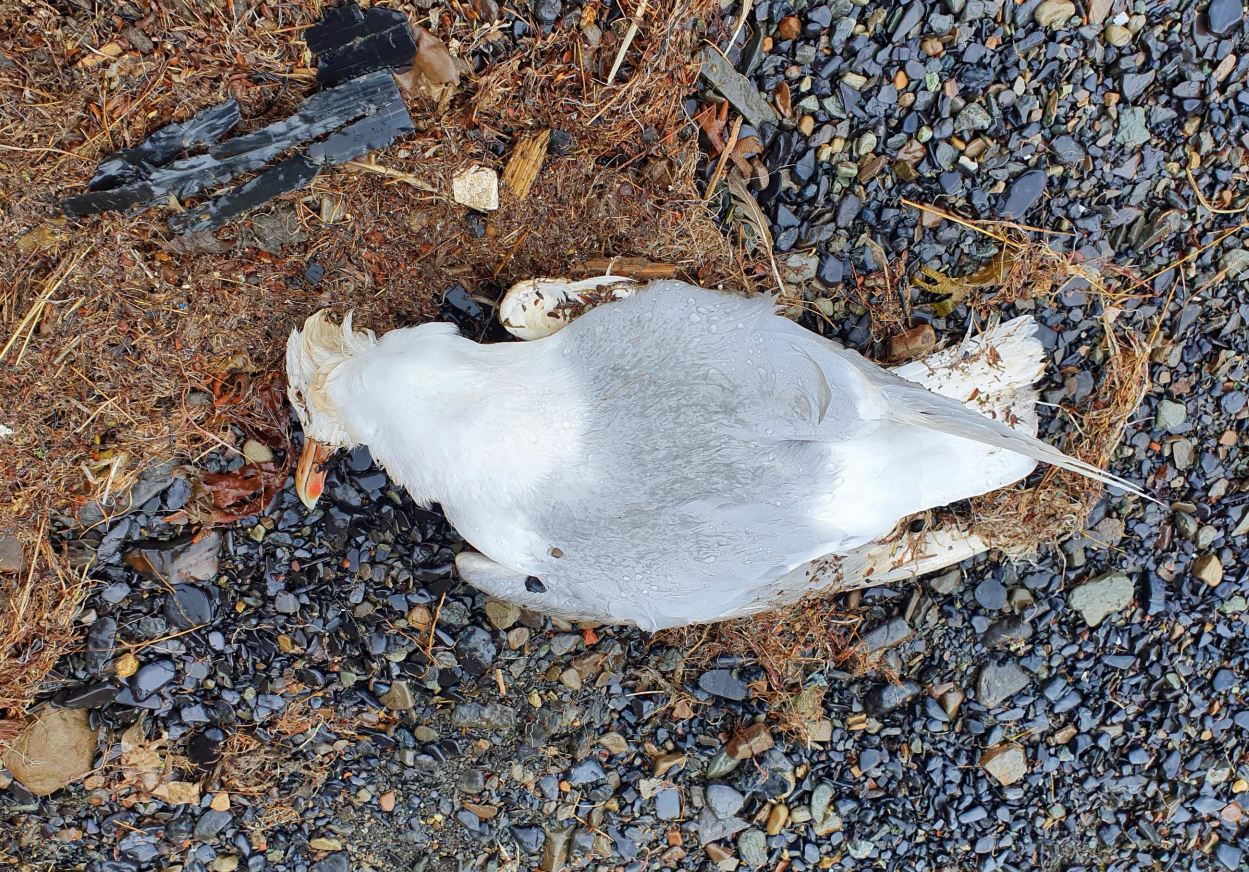
#16,844
Although we know that many migratory bird species spend their summers roosting in high latitude regions of Alaska, Siberia, and the Arctic, we know relatively little about the transmission of HPAI (Highly Pathogenic Avian Influenza) viruses in these remote climes.
Until relatively recently, HPAI viruses appeared to be ill-suited for long term carriage by migratory birds (see PNAS: The Enigma Of Disappearing HPAI H5 In North American Migratory Waterfowl), but a reassortment event in 2016 seems to have given HPAI H5 clade 2.3.4.4 viruses that ability.
A 2016 study (see Sci Repts.: Southward Autumn Migration Of Waterfowl Facilitates Transmission Of HPAI H5N1), suggests that waterfowl pick up new HPAI viruses in the spring (likely from poultry or terrestrial birds) on their northbound trip to their summer breeding spots - where they spread and potentially evolve - and then redistribute them on their southbound journey the following fall.
This would help explain the recent, almost yearly, return of avian flu to Europe and it raises concerns that HPAI H5 might establish itself in North American birds as well.
Unknown, however, is how well HPAI viruses like H5N1 can survive, spread, and potentially evolve in these remote high latitude breeding spots.
Additionally, HPAI viruses that once all-but-disappeared during the summer months at lower latitudes are showing remarkable persistence, as evidenced by recent reports from Maine, and this report from Norway.
Bird flu causes high mortality among wild birds in Norway
Published 21.06.2022 Modified 22.06.2022
In recent weeks, an abnormally high number of sick and dead birds has been observed in several places along the Norwegian coast. In May and June, the Veterinary Institute detected highly pathogenic avian influenza (HPAI) of subtype H5N5 in sea eagles, ravens, crows and several gull species in Troms and Finnmark. In the North Sea and along the coast in Rogaland, a high number of dead ospreys have been observed, and HPAI of the subtype H5N1 has been detected in several of these. In addition, HPAI has been detected in wild birds in Oslo, Bergen and several places in Trøndelag and Møre og Romsdal.
For a recent opinion/hypothesis on this behavior change you may wish to read mBio's Has Epizootic Become Enzootic? Evidence for a Fundamental Change in the Infection Dynamics of Highly Pathogenic Avian Influenza in Europe, 2021.
All of which brings us to the following announcement from the Governor of Svalbard of what appears to be the first detection of HPAI in the Arctic.
This dead polar gull was found at Gamlekaia in June. Photo: Anita Rude
The Veterinary Institute has detected contagious bird flu (highly pathogenic avian influenza virus - HPAI) in a polar gull that was found dead at the quay in Longyearbyen in June. Bird flu has never been detected in Svalbard before, and as far as the Veterinary Institute is aware, this is the first detection of the virus in the Arctic.Published 23.06.2022
- The detection of HPAI on Svalbard is worrying, since a number of vulnerable wild bird populations nest on the archipelago in the summer. The species that gather in large bird cliffs will be particularly vulnerable when the bird flu is introduced in the bird colonies, says Knut Madslien, head of wildlife health at the Veterinary Institute.
- It is very rare for humans to be infected with bird flu. On a general basis, one should avoid touching sick or dead birds without protective equipment.
- The public is encouraged to contact the Governor in the event of the discovery of a dead wild bird on Svalbard.
- Bird flu has also been detected in several different mammals in Europe this year, such as foxes, lynxes, otters, ferrets, badgers and various seal species. One must therefore be aware that the infection can be transmitted to other animals, and animals or birds that are attracted to scavengers are particularly vulnerable. In Svalbard, especially mountain foxes will be exposed, perhaps also various seals. Abnormal behaviors (such as balance problems, circular motions, or bent head postures) in these species may indicate bird flu infection. The public is encouraged to contact the Governor of such observations as well.
Study: Global Dissemination of Avian H5N1 Clade 2.3.4.4b Viruses and Biologic Analysis Of Chinese Variants
Two States (Michigan & Minnesota) Report HPAI Infection In Wild Foxes
Ontario: CWHC Reports HPAI H5 Infection With Severe Neurological Signs In Wild Foxes (Vulpes vulpes)
Colorado Investigating 1st Human HPAI H5 Infection In the United States
The same thing could happen again.
But this time HPAI H5 is far more widespread, and it has acquired new traits that may give it advantages it didn't have the last time. Time will tell.
But whether it comes from avian H5Nx, or Nipah, or MERS-Cov, or another novel virus, another pandemic is inevitable. The only question is when.
And when that happens, we'd better be ready for it.
